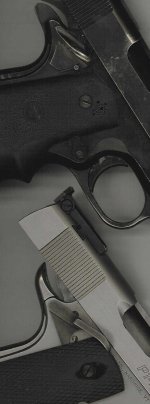I like the 1911 design. I do not like the money that needs to be spent to have a gunsmith install an ambi safety to make it lefty friendly. IMO, all other controls are easy to operate on a 1911 design lefthanded except for the safety.
My question:
Is condition 3 (empty chamber) a viable alternative to carrying cocked and locked. I know the original intention of the design and am completely comfortable with it but, I would rather not have my gun screwed with and changing it's original config by adding an ambi safety.
What the heck did the armed forces do with left handed shooters? Were there ambi safeties back in WWII? Is there a technique for a lefty using a 1911 design with the regualr safety that I am not aware of?
Can an ambi safety be installed by me with little gunsmithing knowledge at all?
Should I just learn to shoot right handed and save myself all the angst?
Yes, it does add an extra step to get your weapon into action, but with practice (and I have) it seems that the delay is negligable.
I'm not a cop, do not live in a dangerous neighborhood, do not work at a dangerous job, don't go to dangerous places if I can help it.
The gun in question is a recently acquired Colt Government XSE.
TIA for your comments,
CANIS
My question:
Is condition 3 (empty chamber) a viable alternative to carrying cocked and locked. I know the original intention of the design and am completely comfortable with it but, I would rather not have my gun screwed with and changing it's original config by adding an ambi safety.
What the heck did the armed forces do with left handed shooters? Were there ambi safeties back in WWII? Is there a technique for a lefty using a 1911 design with the regualr safety that I am not aware of?
Can an ambi safety be installed by me with little gunsmithing knowledge at all?
Should I just learn to shoot right handed and save myself all the angst?
Yes, it does add an extra step to get your weapon into action, but with practice (and I have) it seems that the delay is negligable.
I'm not a cop, do not live in a dangerous neighborhood, do not work at a dangerous job, don't go to dangerous places if I can help it.
The gun in question is a recently acquired Colt Government XSE.
TIA for your comments,
CANIS

